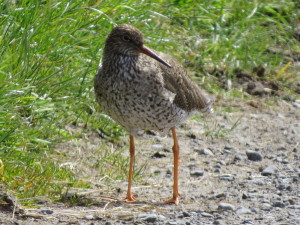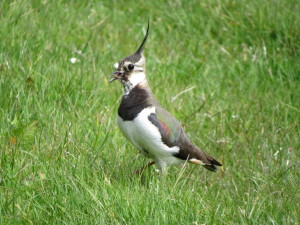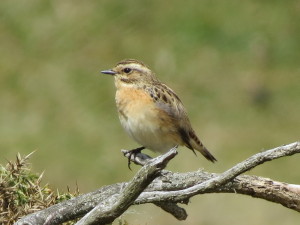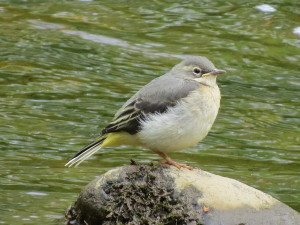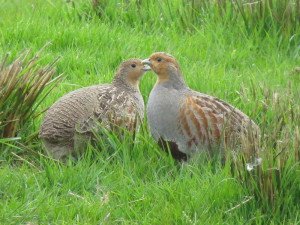A day out west started with an area well stocked with breeding waders near Blanchland. Lapwings nest here in healthy numbers,and among some 40-50 pairs were many young of varying ages, some a little to close to the main road. Many females were sitting on eggs too.Displaying males were still very much in evidence, as were song-flighting males of several other upland species such as Golden Plover, Curlew,Snipe and Redshank. 15 or so singing Skylarks joined in the chorus,as did a number of Meadow Pipits. A female Whinchat preening on a bush-top was a nice find,with Wheatears and Red Grouse nearby. Overhead,three Buzzards soared and on the edge of a pine wood a Tree Pipit and Redstart noted. A distant Cuckoo could be heard calling. Other birds of note were Goldcrest,Redpoll and Siskin. A scan of the nearby Derwent Reservoir revealed Little ringed Plover,Common Sandpiper and best of all, a perched Osprey!
Heading further west,I arrived at Dye House where a riverside walk revealed 2 male Pied Flycatchers, a Spotted Flycatcher and several Willow Warblers, a Garden Warbler , Chiffchaffs and Blackcaps. A Dipper sped past,calling.
On next to Allenbanks, where a single Wood Warbler sang as did 3-4 Pied Flycatchers and a similar number of Redstarts. On the river,a pair of Grey Wagtails fed 2 fledged young,hard working parents bringing very frequent beak-fulls of insects to their offspring. A Grey Heron stood motionless on a rock mid-stream and a pair of Gooseanders swam quickly by. Above Swallows,House Martins and Swifts hawked for insects,seeming to almost scoop the flies from the tops of trees,the wind forcing them low to feed.Finally,up to Allenheads, where once again, many breeding waders were apparent,the by now, very strong wind making for difficult conditions for them and me. A pair of Grey Partridges allowed very close approach as they hunkered down in the lee of a stone wall. Lapwings with young did the same , sheltering them from the worsening weather. My cue to head for home.
A.S. Jack
